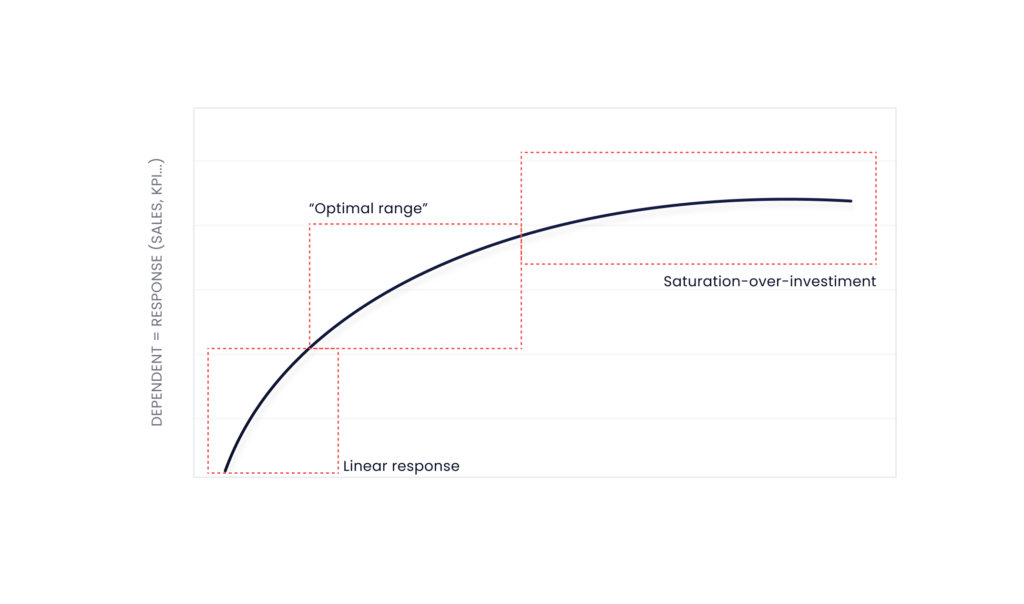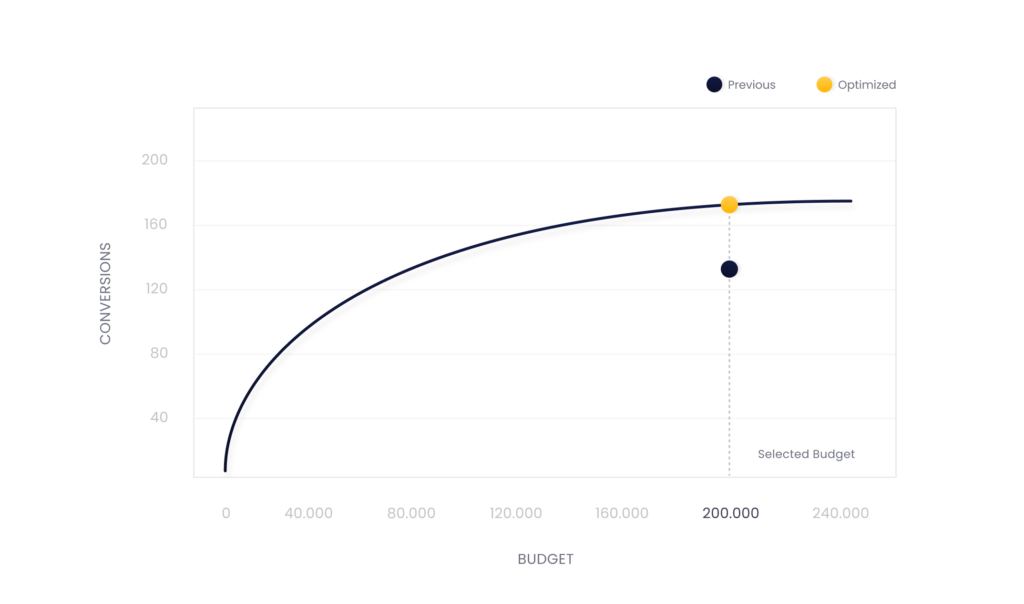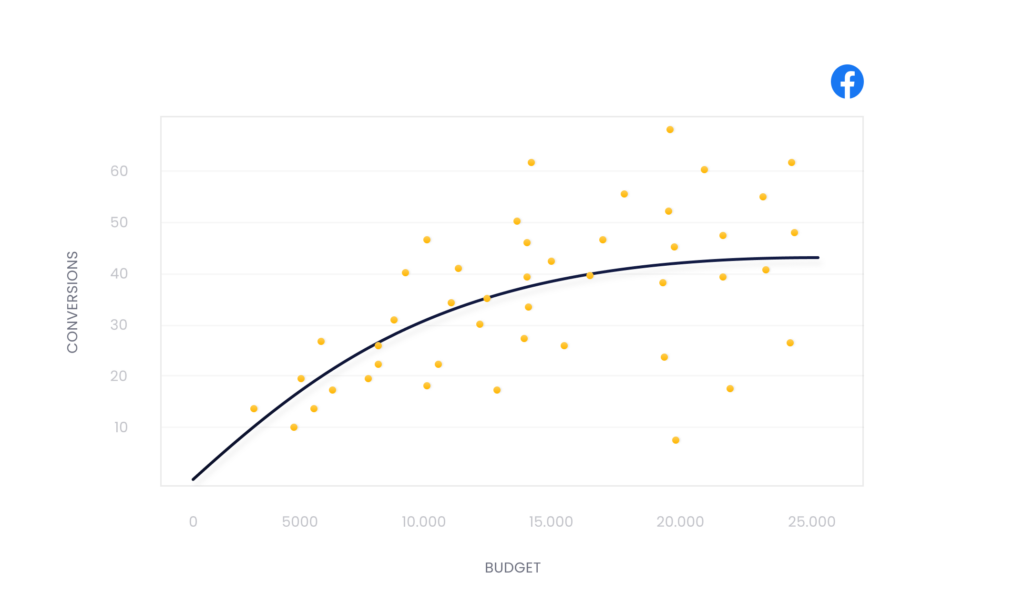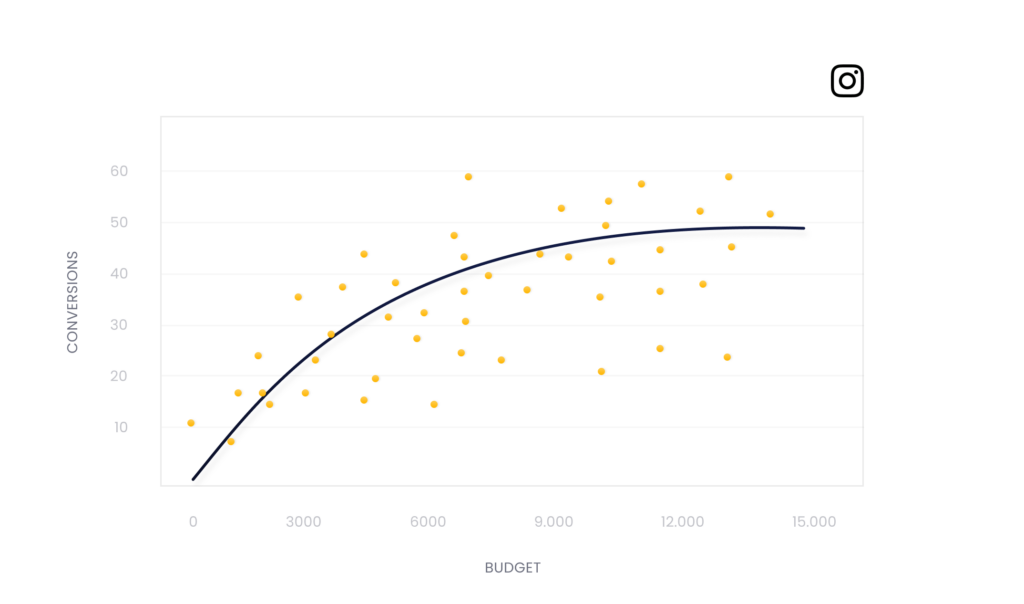BLOG
Maximizing Marketing ROI: The Power of Marketing Mix Modeling
Introduction
“Half the money I spend on advertising is wasted; the trouble is I don’t know which half”.
This is a famous quote from John Wanamaker, successful businessman of the early twentieth century. Pity for him, at his time there were no many tools that could help him in marketing decisions.
Instead nowadays we live in a world where data are everywhere and they can be exploited for a number of purposes. Many are the tools that have been developed to help marketers to gain more and more insight about their decisions. Despite it all, a lot of companies face many problems when it comes to budget invested in advertising.
Marketers' Problem
The first question that should come to mind for those who use digital advertising is:
“am I spending the money in the right way?”
This is a fundamental question that I hope you have asked yourself too. The reason for that is simple: companies spend a lot of money in advertising (and it is done for a good reason). But because of that, you should consider if part of the money that you’re using are not wasted. How can you waste you money? Isn’t every advertisement good advertisement?
I would like to go a little deeper in order to answer to these questions.
We can state with a degree of confidence that advertising it’s healthy for your business. The problem is that there is not a single channel where you can spend all you money: Google Paid Search, Meta, YouTube, TikTok, Google DV360, Criteo, TV, Radio an many others. As you know each channel is different: you can target better a specific audience and each channel is better for a different level of marketing funnel.
So the problem is: how much should I invest in each platform? I can assure you that if you spend 20% of your budget on Google Paid Search and 80% on TikTok will bring you very different results than doing the opposite. A typical question is “should I invest more in this platform of in the other one?” or “can I add more budget to this platform or I’m in a saturation point?”.
Another problem that you can face when trying to take marketing decisions is related to offline platforms. With offline channels we mean any type of marketing that is not done through internet. They can range from TV and radio to billboards and print ads. For this reason meanwhile with digital advertising you can gain a lot of data like impressions, click, conversions and so on, with offline channels usually you can only know how much you spend for that. So it is hard to analyze how much that investment weighted in the final results of conversions or sales.
In addition to that a common used tool is Multi Touch Attribution. MTA is a measurement model that takes into consideration different touchpoints on the journey that leads to the final conversion. We can point out right away one of the problem of MTA models: can’t work with offline channels. This is not a trivial matter considering that a good percentage of the advertising budget is used with these channels. Another problem with this kind of tool is that it is getting less and less accurate due to the new privacy regulations that are limiting third-parties cookies. With a bigger tracking error the output accuracy will be worse and worse.
How these problems impact the business?
Well as I said before, there is a fundamental reason why this is important: you can easily take bad (or very bad) budget allocation decisions!
As said before there are many different platforms, each with different users and different ways to reach the final user. As a marketer what you would like to do is to exploit all the channels that can bring you results, but wouldn’t be better if you knew which one is the best for you? Indeed different companies can have way different results using the same channels and budget.
So the best thing to do would be to analyse your past results and understand how you can optimize the results. Moreover during the year there are many variables that can vary the outcome: seasonality, holiday, promotions and so on. Are you able to manage all these variables in addition to everything else?
This seems an hard work… and it is.
And how this affect you? The answer is easy: a waste of money! Not because allocating some budget to a platform gives you back zero results, but there could be better ways to use it.
You’ve probably heard of the “diminishing return” before. It is an economic law that states that with an increasing in budget you get less and less gain. This is generally true also for advertising. So if you see the curve that relate the budget at your favourite KPI, you will see that at a certain point the curve start to saturate.

This is an important factor that you should consider when you have to allocate the budget: if you are in the left part of the curve, allocate more budget means a bigger increase in return. On the contrary instead if you are in the right part of the plot, allocating more budget gives you fewer return.
Understanding where you want to be in the curves is the answer.
Solution
How can you manage to deal with all of this? Marketing Mix Model is the tool that can help you survive in this jungle. I’ll try to give you a simple definition of MMM:
Marketing Mix Modelling is a technique that uses machine learning approaches in order to estimate how much each advertising channel contributes to the sales.
How can MMM help you in your work decisions?
Optimizing the budget
The main thing that you can do using a Marketing Mix Model tool is optimize the budget. Given a total weekly budget allocated for the advertising campaign, the MMM can optimize it between all the platforms.
So with the budget optimization you don’t need to spend more. You can stay with your predefined budget and just squeeze the best results out of it.

Saturation curves
As was previously stated, the law of decreasing returns is a generic yet real principle of behavior. Data confirm this and for this reason we can draw for each platform its saturation curve. With this curve and knowing how much budget we’re allocating, we’re able to understand how to behave accordingly. Indeed if we’re still on the left part of the curve there is the possibility to push the budget for that platform. Contrary if we’re too right in the plot it could be better to reduce the budget




Unfortunately things are not that easy and there is always a trade-off. A Marketing Mix Model automatically uses them to optimize the budget, but can be also useful to visualise them in order to know how your product is performing in each channel. It can be a valuable ally during your next marketing decision.
Weekly allocation
I introduced before that one of the main purposes of the Marketing Mix Model is budget optimization. What AD cube MMM does is not only optimize the budget between the platforms, but it optimizes it between the weeks. Indeed I think you agree with me if I say that not all the weeks are the same. End of July is not the same as end of December. The return you get can vary…a lot!
There are many variables that can affect your product performances. MMM can exploit them to get the best result possible. Some of these variable are seasonality, promotions, holidays and so on. The MMM developed by AD cube can also keep in consideration other factors, like bad data quality. Indeed to train a MMM model and get reliable forecasting, you need al least 2 years of available data. More you have, the better it is. Unfortunately some of these could represent a time period where bad events happened and affected your business, like COVID-19, bad brand reputation and so on. These are useful informations that could improve even more the predicted output accuracy.

What-if scenarios
Another way to use the Marketing Mix Model toolkit is creating “what-if” scenarios. Indeed maybe you would like to do some experiments like:
- what if I spend more on google search and less on meta?
- What if I increase by 15% my total budget?
- What if I Change my budget allocation between weeks?
All these questions would need time and money to be answered. MMM instead can provide a prediction of these without the need to spend more money.
You can go directly from question to answer effortless!

Conversion attribution
One thing that you want to know to analyse your advertising campaign is how many conversions or sales did each platform bring. Probably you used Google analytics for this scope. I will report the definition from Google Analytics site for attributions:
“Attribution is the act of assigning credit for conversions to different ads, clicks, and factors along a user’s path to completing a conversion”
The problem with that is that by our experiences, Google Analytics system of attribution is not that reliable. It tends to attributes more conversions to Google products, and consider “organic” all the attributions that it don’t understand. Of course this is not the reality. This is why you can use Marketing Mix Model ability to estimate a more reliable conversions attribution. Moreover with MMM you can consider offline channels like TV, radio, OOH, info that are impossible to obtain with Google Analytics. So using MMM attribution you can have a more realistic view on how each channel affect your business.

Conclusions
Finally I want to recall with bullet points the benefits that you get using a Marketing Mix Model like the one of AD cube:
- The data you need is easily obtained: it just need aggregated data like costs, impressions, clicks, conversions, sales.
- Can work with offline media channels, so all the budget spent on TV, radio, papers, OOH don’t stay out of the analysis.
- Can take into consideration useful information like seasonality, holiday, promotions, data quality that will improve the prediction accuracy
- It’s a complete toolkit that can be very useful in taking marketing decisions: it will avoid to waste money and increase the ROI by investing budget in the right platform, creating a weekly optimization, and making possible to do free experimentations via “what-if” scenarios.
Author
Alessandro Contu
CONTACT US
Get in touch!
Get in touch!
To learn more about AD cube and how we could improve your business write us a message. We will reach you back shortly!